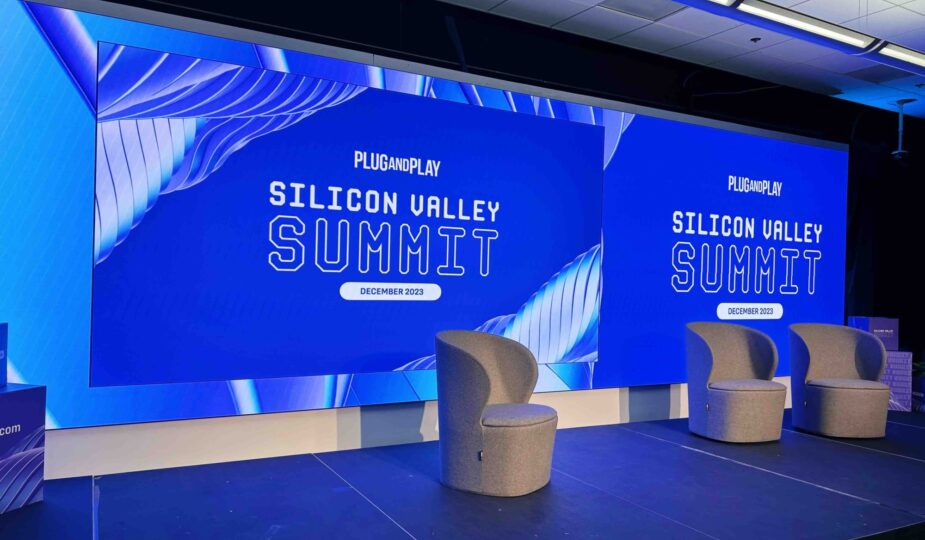2024年三个保险科技人工智能趋势

自ChatGPT推出已过去一年,许多保险科技初创公司仍在探索如何有效利用这项新技术。人工智能已经成为常态,差异化将来自于如何创造性地应用它来解决实际问题。
The recent Plug and Play Winter Summit in Sunnyvale, CA, fully displayed this phenomenon. Plug and Play connects start-ups with large corporations through industry-focused accelerator programs. The Winter Summit InsurTech line-up unveiled three key AI themes that we can expect to see progress over the coming year.
AI as a co-pilot
At the beginning of the AI frenzy, employees across all industries worried they would be replaced by new technology, and for good reason. Many corporations were openly considering implementing AI solutions that would decrease the need for human workers, thus cutting costs and increasing efficiency.
As InsurTech start-ups explore applying AI to the insurance agent workforce, they are shifting away from viewing AI as a potential replacement for agents, instead viewing AI as a tool to enhance and streamline the work that agents do. For example, using AI solutions to reduce processing time and help tackle highly complex claims.
It is not uncommon to hear InsurTech AI solutions being pitched as a “co-pilot” for agents, likely inspired by the similarly named Microsoft Copilot, an AI chatbot. Microsoft also recently made waves in the InsurTech industry by partnering with SCOR and ReMark to host a collaborative hackathon exploring generative AI and reinsurance.
As Pooja Shah, Senior Associate at Avanta Ventures, put it, “Ultimately, despite all of the hopes that we have for GenAI and AI in general, at the moment there still is a human involved. So, it’s not going to be adjuster vs. AI, it’s going to be adjuster with AI vs. just a normal adjuster.” Shah also noted that the key to reducing employee AI concerns is quality training that shows that AI is not something to fear. Rather, it can be a valuable tool for agents that may give them an advantage over others in their field.
尽管我们对生成式人工智能和一般人工智能有着很多期望,但目前仍然需要人类参与其中。 因此,这不是理赔员与人工智能之间的对决,从根本上说是借助人工智能的理赔员与普通理赔员之间的较量。
Pooja Shah, Avanta Ventures 高级研究员
目前人工智能能力的局限性并不是让人类参与其中的唯一因素。 还有一些新兴的法规,例如:人工智能法案和道德问题,旨在防止我们的工作岗位消失。 欢迎查看法再发布的专家视角系列之“人工智能和保险的未来”,了解有关该主题的更多信息。
与现有系统融合
在保险科技的整个发展过程中,社群逐渐认识到现有系统的复杂性。 整体思维方式已经从试图取代这些系统转变为融入其中,人工智能也不例外。 人工智能初创公司从过去的经验中汲取教训,专注于将人工智能整合到现有的技术堆栈中。
人工智能工具易于集成到现有系统中,并且不需要进行全面改造是至关重要的。无论人工智能解决方案多么有价值,如果它被认为过于复杂而无法与内部技术集成且难以轻松使用,那么它将不会被考虑。对于许多机构来说,更换系统所耗费的时间和资源成本超过了新系统所能带来的好处。
集成到现有系统而不是试图替换它们也具有安全优势。 公司可能会对将所有数据导出到陌生的系统中感到犹豫,特别是因为监管人工智能数据安全的法规还处于起步阶段。 相反,如果初创公司的人工智能工具集成到现有系统中,那么它们就可以提供价值,从而允许公司保持数据的私密性并在自己的基础设施上进行构建,而不必将数据转移到其他公司的模型。
对多模态的兴趣日益增长
大型语言模型一直是许多保险科技初创公司的基础。然而,一些人认为,多模态是人工智能解决方案的下一个飞跃。虽然大型语言模型处理文本并执行与语言相关的任务,但多模态人工智能可以接收许多数据类型,包括图像、文本和语音,以理解大语境中的行为和行为模式。
当被应用时,大型语言模型可以帮助核保人理解冗长而复杂的现场评估报告,并通过识别重要内容和回答特定问题来加速处理管理任务。然而,多模态人工智能解决方案不仅仅是描述发生了什么,还能理解为什么会发生,并利用这一点来预测未来的风险。
多模态人工智能在保险领域的概念仍然比较新和有点模糊,但创始人相信它可以帮助专业人士理解大语境中的行为和行为模式,提供与大型语言模型一样多甚至更多的价值。
“大型语言模型”这个词汇正在变得过时。随着我们进入物理世界,与大型语言模型将会更加分离,因为我们将引入时间维度、空间维度和行为维度。"
Ivan Poupyrev 博士, Archetype AI 首席执行官兼创始人
Archetype AI 的首席执行官兼创始人 Ivan Poupyrev 博士表示:"大型语言模型这个词汇正在变得过时。随着我们进入物理世界,与大型语言模型将会更加分离,因为我们将引入时间维度、空间维度和行为维度。" 如果创业公司能够完善他们正在研发的多模态解决方案,保险业将获益匪浅。
随着我们进入2024年,回顾我们在2023年学到的关于人工智能的知识,并考虑由初创企业引领的可能成为行业标准的趋势,这是很有帮助的。
在利马,我们专注于利用最新技术帮助保险公司提升其保单持有人的体验,使其能够吸引并保住新业务。我们的数字解决方案,结合我们独特的技术专长和法再全面的数据和分析能力开发而成,覆盖整个消费者旅程,从购买到理赔。
了解我们的数字解决方案如何帮助您满足当今客户的期望,欢迎查看法再的 ”人工智能与保险的未来“,获取更多有关保险领域人工智能现状的更多信息。